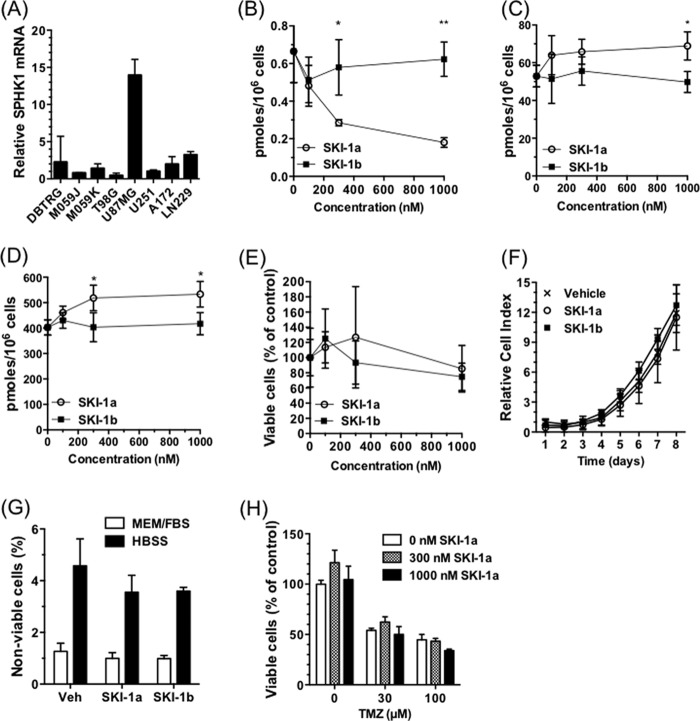FIGURE 4.
A selective inhibitor of SPHK1 does not affect GBM cell proliferation or survival. A, expression of SPHK1, normalized to 18 S rRNA, was compared in a panel of GBM cell lines. The expression level is relative to the U251 cell line (mean ± S.D. from three measurements). B–D, S1P (B), sphingosine (C), and total ceramide (D) content of U87MG cells treated for 72 h with SKI-1a or 1b at the indicated concentrations. Lipids were extracted and quantified as described under “Experimental Procedures.” E, the effect of SKI-1a and 1b on U87MG cell proliferation was assessed after 7 days by MTT assay. F, the effect of 500 nm SKI-1a or 1b on U87MG proliferation was assessed using the xCELLigence real-time growth assay system. G, viability of U87MG cells cultured for 48 h in growth medium or HBSS in the presence of 500 nm SKI-1a, SKI-1b, or vehicle control (Veh). The proportion of non-viable cells, as detected using annexin V/propidium iodide staining and flow cytometry, is shown. H, the effect of SKI-1a on viable U87MG cell number in the presence of the indicated concentrations of temozolomide (TMZ) was assessed by MTT assay. Cells were treated for 6 days. Results are mean ± S.D. from a minimum of three treatments and are representative of two experiments. Statistical significance was determined using a two-way analysis of variance followed by Bonferroni's post-test to compare SKI-1a to 1b. *, p < 0.05; **, p < 0.01; ***, p < 0.001.

